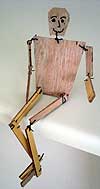
|

|
1/15/10
But for many reasons, I'm now thinking building it in two pieces will actually be better, for a number of reasons.
Another major change under consideration is making the beam wider -- possibly 30 inches at the "10 ft." station, and 24 inches at the "4 ft." and "16 ft." stations. Stay tuned.
1/16/10 is a Saturday. I'll probably get the strongback finished, then go to Lowes for a couple of pieces of the 1/4" underlay ply I saw there the other day. It's called SurePly. (Made in China, of course.)
HERE'S A LINK
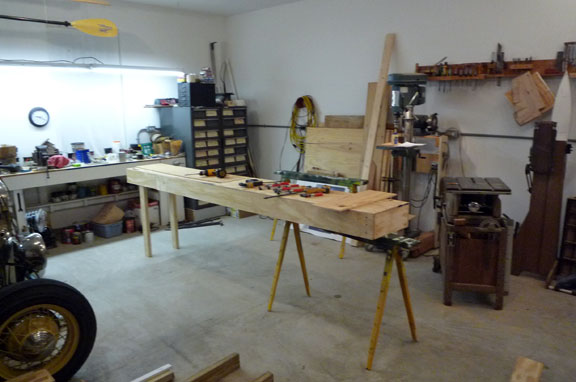
I'm again thinking of making the beam 24 inches.
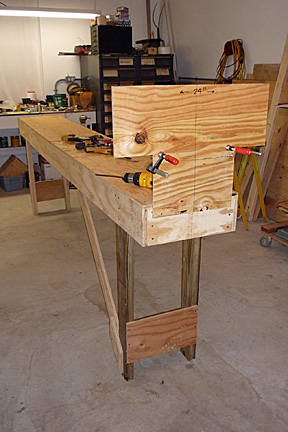
I'm also using a nice long batten to determine "rocker" shape, and wondering how I can make cockpit section have less rocker than the ends, while retaining the "look" above the water line.
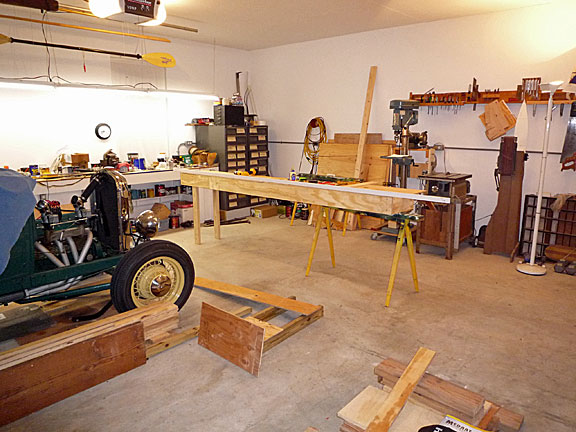
1/16/10 - - - and I forgot about the public hearing I had to attend. (You don't wanna know.) 1/17/10 - - - Reviewed Jim Michalik's plans for his Piragua 18 this morning. (I bought his blueprints, etc. last year.) Sunday afternoon went to Lowes and bought two sheets of Sureply, for $43.09 with tax. (I'm really not sure about this stuff, but their website claims waterproof glue, and the surfaces look very nice.) 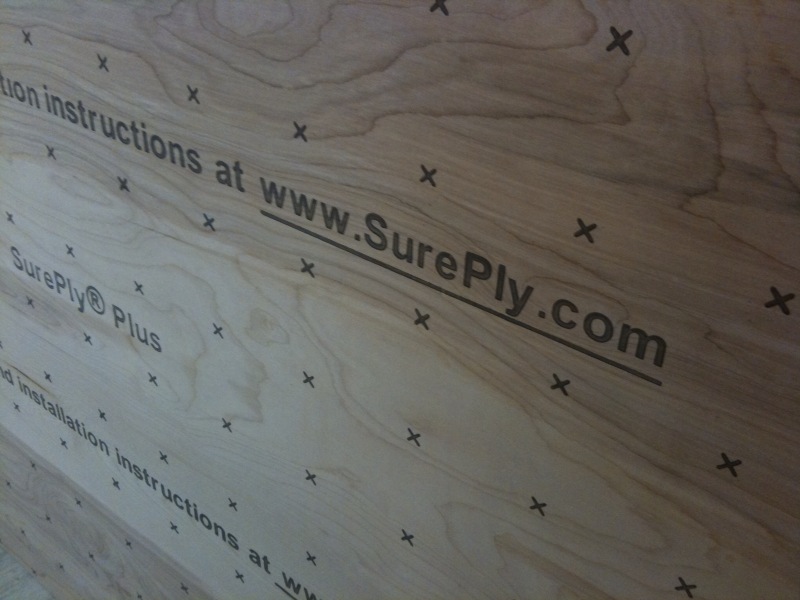
The batten isn't working out as well as I thought it would. (Recent photos vis my iPhone. Not bad, considering no flash, methinks. Of course, some of the phots are taken with ny digital camera.) 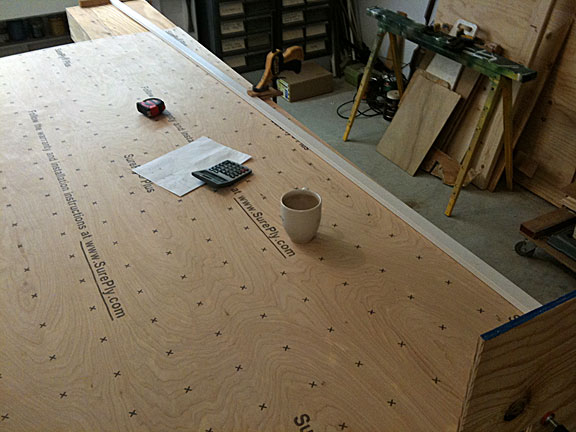
Might mix up a bit of epoxy tomorrow and make the butt splices in the sides, IF I get the layout to my satisfaction. Still thinking about the beam width. It's now 1/19/10, ans still no epoxy mixed. The curve of the rocker is perplexing. Let's review:
1/20/10 -- I've decided to make the two "cockpits" four feet in length, and the max. beam (at the "transoms") 28 inches wide. Also, I'm going to make the cockpit section flat-bottomed. This might not look all that great, but I think it will improve stability. So today, I laid out two (of the four) sides and mixed up a small batch of epoxy (my first on this boat, mixed for 3 minutes) and butt-spliced one of the sides as pictured here:
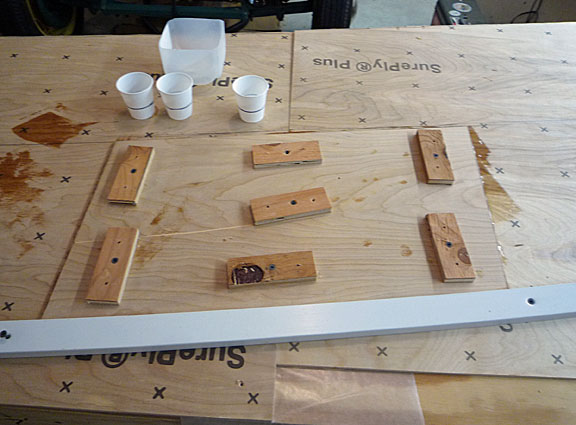
Now we'll see how long it takes for this stuff to cure. It's the "slow" hardner, and the temperature in the shop is about 55 degrees F. without the space heater running. In the photo, notice:
1/21/010 -- Epoxy set up nicely. I built a "tent" over the joint and left a 50W lamp burning in it overnight. Temperature inside tent was 100 degrees F. this morning. Today I trimmed two edges of the piece containing the two sides, flipped it and made another butt joint, and applied some tape to the first butt joint. Then I built another "oven."
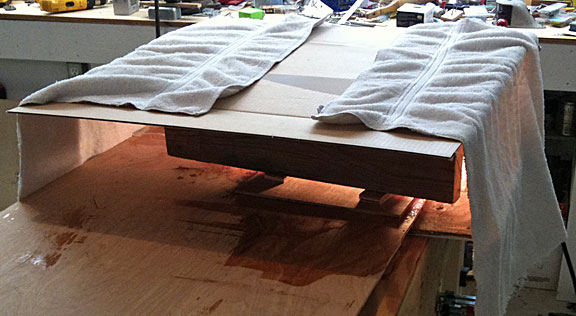
I've read lots of warning about getting epoxy on my skin. The primary risk associated with epoxy use is sensitization to the hardener, which, over time, can induce an allergic reaction. It is a main source of occupational asthma among users of plastics. So I wear gloves when working with epoxy. From Wikipedia: Vinegar is an effective and safe solvent to clean up tools, brushes, skin, and most surfaces contaminated with epoxy resin or hardener. Acetone can also be used, but it is very volatile and flammable, unlike vinegar. Vinegar is safer for cleaning epoxy resin from human skin than acetone: both liquids will dissolve the resin, but the resin/acetone solution can easily pass through the skin into the bloodstream, unlike vinegar. White vinegar can even clean up epoxy resin that is beginning to cure/harden.

|

Web page by
|
(Ads are not selected by the webmaster; Google selects advertisers based on page's content.) visits since 2/29/08 |
